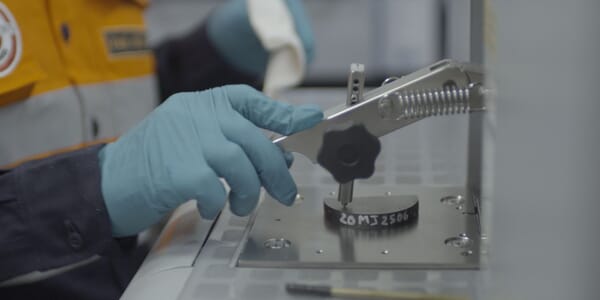
Control
Advanced control systems deliver improved outcomes for mineral processing operations.
Read More
Lab testing is carried out to determine ultimate flotation design, screen potential reagents, determine optimum feed grind size and predict changes in performance of different ore types.
Make An Enquiry




Batch flotation, in which a 1–2kg sample of ore is floated using a standard set of operating conditions, is the standard technique used to assess ore floatability.
Batch tests are usually performed using the feed ore sample to the process, but they are increasingly being used to characterise the floatability of internal flotation circuit streams and ‘map’ how the floatability is changing around a flotation circuit and across different processes.
The practical flotation time required for an ore can be determined by producing incremental concentrates. Separate concentrates are removed at timed intervals until the froth is completely barren.
Using the weights and assays for each incremental concentrate, the metal distribution in each can be determined. This information is then graphically plotted as cumulative recovery versus cumulative flotation time and used for the guidance in subsequent flotation tests.
Different collector systems will often show significant differences in flotation rates, which will be apparent by comparing their individual recovery versus time curves. It is also good practice to microscopically examine the incremental concentrates to determine the relative flotation rates of the variously associated minerals and the necessity for regrinding.
A locked cycle test is a repetitive batch test used to simulate a continuous circuit. The basic procedure consists of a complete batch test performed in the first cycle which is then followed by similar batch tests which have ‘intermediate’ material from the previous cycle added to the appropriate location in the current cycle.
These batch tests, or cycles, are continued in this iterative manner for a number of cycles until, ideally, the steady state is reached. The final products from each cycle – i.e. final concentrate and final tailings – are filtered and thus removed from further processing. At the end of the test, all the products, final and intermediate, are dried, weighed and subjected to chemical analysis. The test is balanced and a metallurgical projection is made.
An absorption method widely used in both qualitative and quantitative analyses.
The infrared region of the spectrum includes electromagnetic radiation that can alter the vibrational and rotational states of covalent bonds in organic molecules. The IR spectrum of an organic compound is a unique physical property and can be used to identify unknowns by interpretation of characteristic absorbances and comparison with spectral libraries.
IR spectroscopy is also used in quantitative techniques because of its sensitivity and selectivity. The IR technique is discussed here primarily for application in identification of organic compounds and will focus on the mid-infrared region.
Take your operations to the next level by exploring these additional products and services.